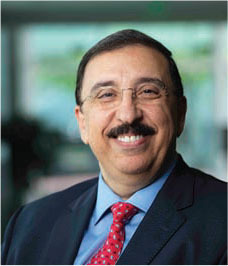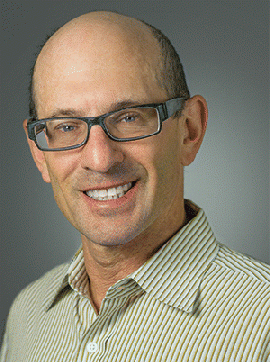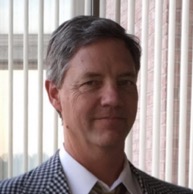Dobrin Lecture
FOR STUDENTS:
- Maximum of 50 students allowed to present posters.
- Poster Submission:
- Please read the following files to submit your files here. This counts as your RSVP; please do not RSVP again using any other link or form.
a. Poster & Video Instructions to Student Presenters (required)
b. Example Poster Slides
c. CV (optional)
d. Paper directly related to your poster presentation (optional) - Submission Deadline: Friday, Feb. 26, 2021 at 11:59pm (i.e. midnight).
- Cancellation Deadline: Please email Kirene Ramesar at kramesar@uh.edu by Monday, Mar. 1, 2021 at 9am.
- Please read the following files to submit your files here. This counts as your RSVP; please do not RSVP again using any other link or form.
- Students not presenting posters: Please RSVP here. Admission is free.
- Prize categories - to be determined.
- Volunteer to be a Judge here for the student poster competition: This is counts as your RSVP.
- Judges should NOT RSVP again using any other link or form.
- The sign up link explains the judging instructions.
- UH students cannot be judges.
- To cancel, please email Kirene Ramesar at kramesar@uh.edu.
- Sufficient judges have signed up; therefore, the link has been removed.
27th Annual Milton B. Dobrin Lecture
Spanning hydrocarbons to humanitarianism: Where is geophysics going?
Monday, March 8, 2021
................................. FEATURED SPEAKERS ..................................
* Maurice Nessim - President of the Society of Exploration Geophysicists
* Paul Bauman - first SEG Humanitarian Award Winner
* Andy Sabin - Board of Directors of the Geothermal Resources Council
Maurice Nessim

Maurice Nessim is the President of the Society of Exploration Geophysicists (SEG) and has been an
active SEG member since 1991, serving as an SEG director at large in 2015 to 2016. He has a BS and an MS in physics, nuclear physics, and geophysics and has won several
prestigious awards and patents including the Schlumberger Chairman’s Award. He is board member of the International Association of Geophysical Contractors (IAGC),
for which he served as chairman in 2017. He is a member of the European Association
of Geoscientists and Engineers, Society of Petroleum Engineers, and American Association
of Petroleum Geologists. In 2018, he was appointed as a board member of the Houston-based
Technology Collaboration Center, an organization that fosters collaboration across
technology sectors — including space,
medical, and energy — to address real-world problems.
Nessim has more than 30 years of oil and gas industry experience in various technical
and management positions. He has authored and coauthored more than 25 technical papers that have been presented
at various international conferences. He joined WesternGeco as a geophysicist in 1981 where he served as
area vice president for the Middle East and Asia, area vice president for North and
South America, and global vice president of operations.
Read Nessim's extended bio.
Boldly Embracing the Future
The dire, unforeseen intersection of plunging oil prices due to oversupply and the
collapse in demand due to the coronavirus outbreak has left us with record-setting
decreases in exploration and production spending, which we know inevitably leads to
lower geophysical investment. Fortunately, since the 2014 market slump, the geophysical
market has consolidated significantly, and business models have adapted to be nimbler
and asset light. Additionally, unlike in 2014, energy companies are reacting quickly
to preserve cash flow by making dramatic cuts to capital and operational expenditures,
including significant personnel reductions, to preserve liquidity. While this reactive flexibility is laudable, there is another consequence we cannot
deny. This unique market downturn has resulted in an exodus of industry talent — be
it through layoffs, resignations, or retirements. Employment in the oil and gas industry
was reduced by 28% during the last downturn, and despite a slight recovery in 2019,
it is expected to drop an additional 32% by 2021. Let that sink in. In five years,
we will have reduced the workforce — including geoscience experts — by nearly half.
How we manage our valuable human capital will be one of our greatest challenges going
forward. We will need to find a balance between retaining the expertise of experienced
employees and attracting and training new talent through university programs. There is no question that both the energy industry and the applied-geophysics industry
are at a crossroads defined not only by the current pandemic and oil prices but also
by the inevitable, fundamental structural changes facing a global economy increasingly
focused on decarbonization and renewable resources. While the future is largely uncertain,
one thing is sure. We will not survive without evolving — and doing so quickly. We
will need to act and think in new ways. So, what is the right path to inventing the future we want? When I asked myself that
question, I knew I did not have all the answers. I engaged more than 30 leaders and
scientists in deep, generative conversations. I sought their input on the crucial
questions we must confront: What will our applied-geophysics industry look like in
five years? What are the critical skills required to lead a successful energy transition
and to thrive in this future? How do we harness and leverage the promise of the digital
transformation? What will be the role of geophysics and geoscience? How should universities
adapt?
Paul Bauman

Paul Bauman received a bachelor’s degree in Geological Engineering from Princeton University,
and a Master’s degree from the University of Waterloo in groundwater and geophysics.
He has more than 30 years experience in near surface geophysical exploration for groundwater,
natural resources, tunnels, unexploded bombs, industrial waste, ancient burials, and
anything that someone may want to find without drilling or digging. He is best known
for his participation in a number of archaeological documentaries including Nova’s
Ancient Refuge in the Holy Land, Deadly Deception at Sobibor, and National Geographic’s
Finding Atlantis.
More importantly, though, Paul has applied creative geophysical solutions to challenging
groundwater situations in remote locations over much of his career, including in Africa,
Central America, Southeast Asia, and Canada. Bauman successfully completed Geoscientists
Without Borders® projects in Kakuma and Uganda, giving good connection to the namesake
of being the first SEG Humanitarian Award Winner.
Good Geoscience in Dire Places: Searching for Water in Humanitarian Crises
The number of refugees and internally displaced persons (IDPs), worldwide, is about
80 million. Most refugees are fleeing water‐stressed and conflict‐torn countries such
as South Sudan, Somalia, and Syria. Generally, the host countries for refugee populations
are also arid or semi‐arid, such as Kenya, Chad, and Jordan. In the marginal landscapes
where refugee camps are usually sited, groundwater is often the only practical source
of water for drinking, cooking, and sanitation. A lack of access to adequate water
supplies is directly tied to increasing occurrences of cholera, dysentery, hepatitis,
trachoma, and other diseases. Today, with Covid‐19 outbreaks already occurring in
overcrowded refugee camps, improving hygiene is critical. A well‐targeted geophysical
exploration program can make the difference between a successful water supply program
and one doomed to failure. In this talk, I lead you on the geophysical search and
then the discovery of water in a few of the refugee camps and conflict zones in East
Africa. In each of these settings, the cause of human displacement is distinct, the
geology and hydrogeology vary, the landscapes are strikingly different, but the need
for water is equally desperate. In one of the largest refugee camps in the world,
in the Turkana desert of Kenya, seismic and resistivity surveys helped to increase
the water supply to the camp and, simultaneously, a previously unrecognized public
health crisis was addressed. In Northern Uganda, in the devastation left behind by
Joseph Kony and the Lord’s Resistance Army, village water supplies were restored following
geophysical surveys and hydrochemical testing. More importantly, the local Ugandan
crews were trained to carry on with this technical work. Finally, in the midst of
a civil war in the world’s newest country, South Sudan, an emergency mission relying
on resistivity surveys took advantage of a cessation of hostilities to
find water in villages stranded by the conflict.
Andy Sabin

Andy Sabin is the U.S. Navy’s Subject Matter Expert (SME) for geothermal systems. He was the Director of the Navy’s Geothermal Program Office (GPO), CA, from 2008-2013 during which time he oversaw management of the Coso geothermal field and exploration of geothermal systems on select DoD installations in the western U.S. and abroad. As SME, Andy provides technical oversight in geothermal exploration, resource management and R&D and assists in strategic planning for GPO. His 30+ years of experience in earth sciences also includes work in minerals, environmental investigations, and education. Andy earned degrees from the U. Maryland (BA, American Studies and BS, Geology), U. Pittsburgh (MSc, Geology) and the Colorado School of Mines (PhD, Economic Geology). He currently serves on the Board of Directors of the Geothermal Resources Council (President, 2019-2020) and the International Geothermal Association (2017-2023).
Geothermal Energy: What is it and What is its Future?
One of the largest geothermal power producing fields in North America is owned and
controlled by the U.S. military. The Coso geothermal field, entirely within the fence
line of a >1 million acre, high-end weapons testing base called China Lake Naval Air
Weapons Station, has been producing power and selling electricity to the CA grid since
1987. It was discovered and is overseen by the U.S. Navy’s Geothermal Program Office
(GPO).
Geological and geophysical investigations at Coso helped quantify the size and potential
power producing capacity of this volcanic-hosted field and has informed subsequent
exploration and R&D efforts. Ongoing syntheses of this ever-growing data base and
interpretations in a market that is demanding renewable power solutions offers GPO
a perspective on the future of geothermal. This talk will be an overview of geothermal,
what it is and where it is going, through the unique lens of the GPO.
- This is required for all those who will be in attendance, such as:
- UH faculty
- UH Staff
- UH Alumni
- Students not presenting posters
- Industry guests
- Other guests and the general public
- Please provide accurate emails in the RSVP form to receive links to the Dobrin Lecture.
RSVP FOR JUDGES:
- Volunteer to be a Judge here for the student poster competition. This is counts as your RSVP.
- Judges should NOT RSVP again using any other link or form.
- The sign up link explains the judging instructions.
- UH students cannot be judges.
- To cancel, please email Kirene Ramesar at kramesar@uh.edu.
- Sufficient judges have signed up; therefore, the link has been removed.
Virtual links to the event will be emailed to the RSVP attendees' list on Friday March 5, 2021 at 9am, CST.
Chairpersons:
Jiajia Sun – Assistant Professor, EAS Dept., University of Houston
6:30 PM: Boldly Embracing the Future – Maurice Nessim
6:50 PM: Good Geoscience in Dire Places: Searching for Water in Humanitarian Crises – Paul Bauman
7:10 PM: Geothermal Energy: What is it and What is its Future? – Andy Sabin